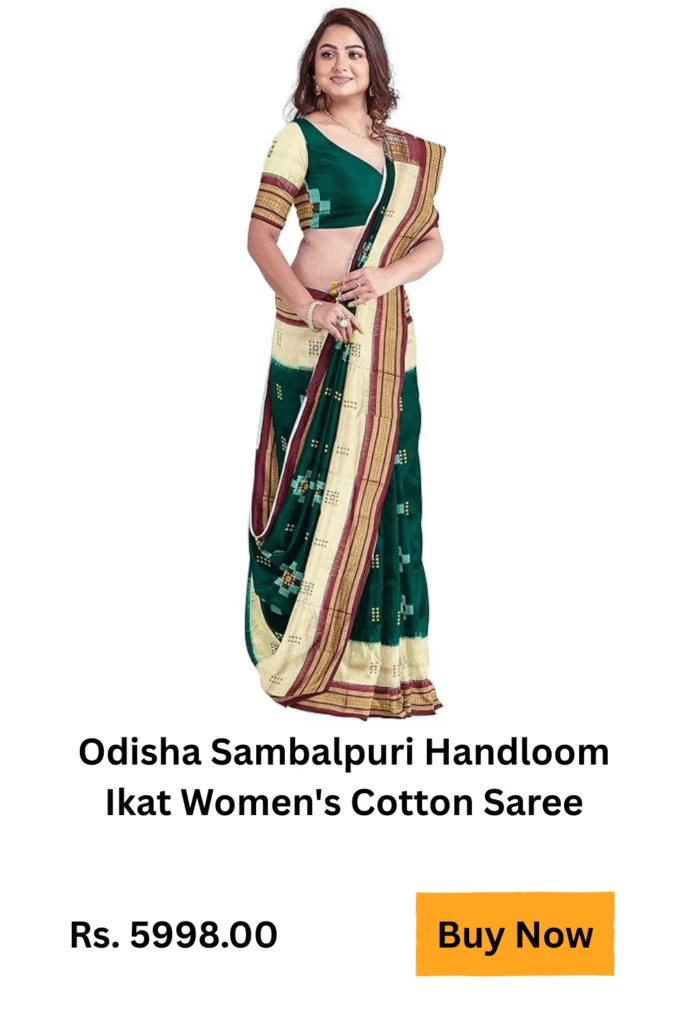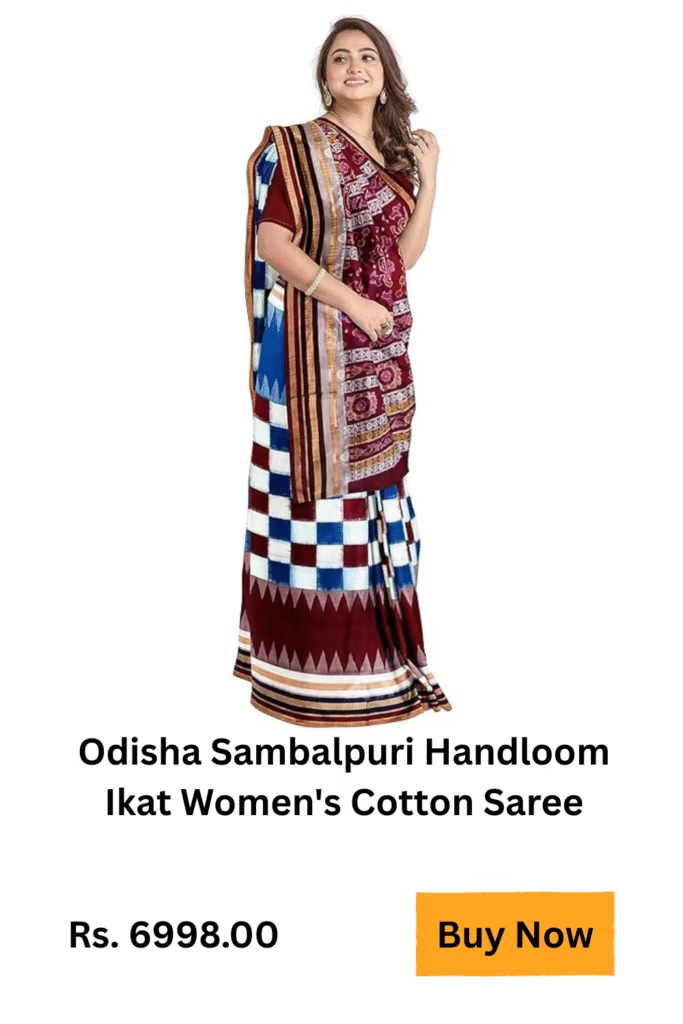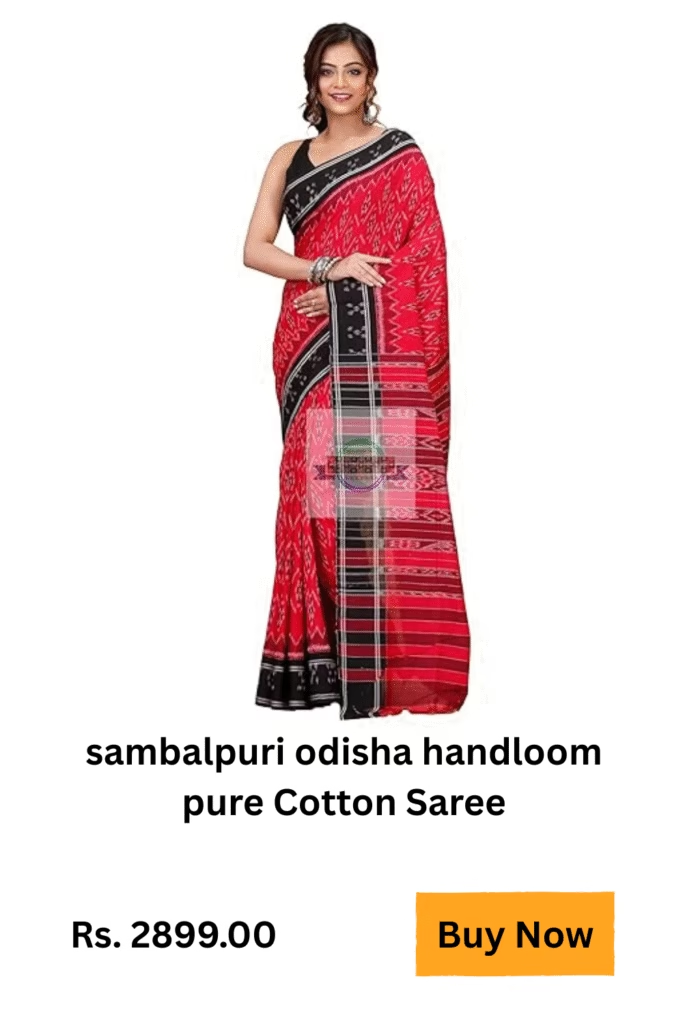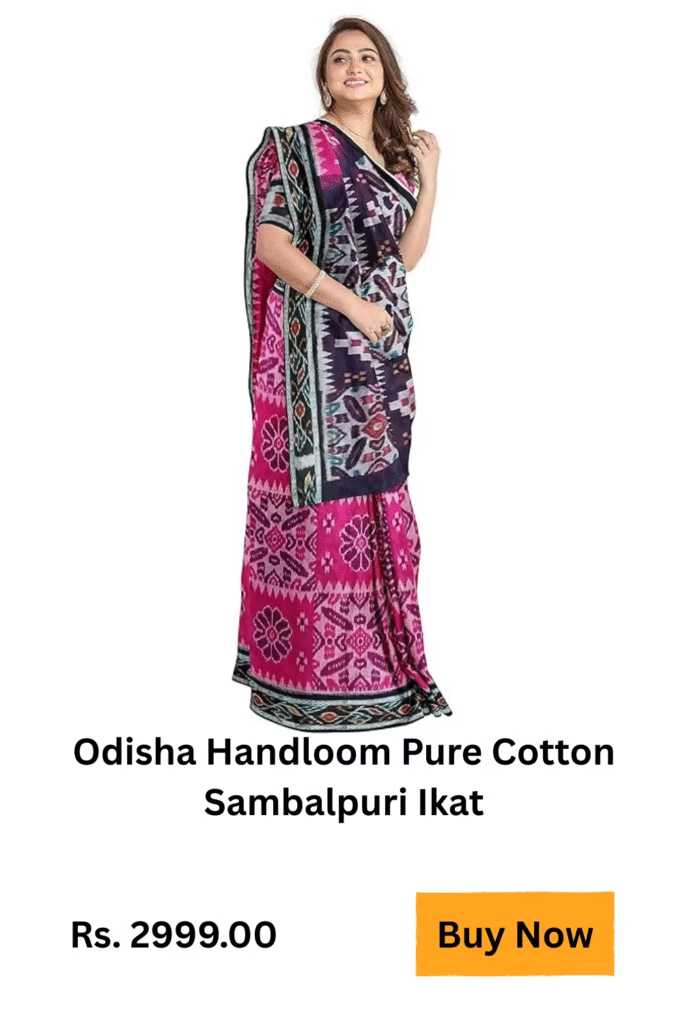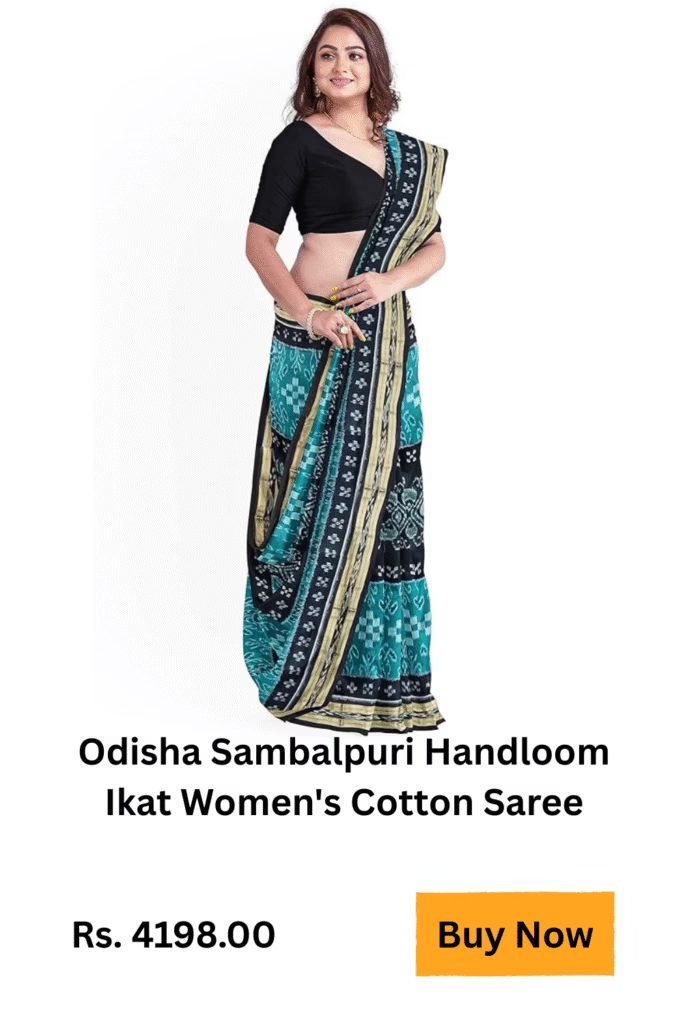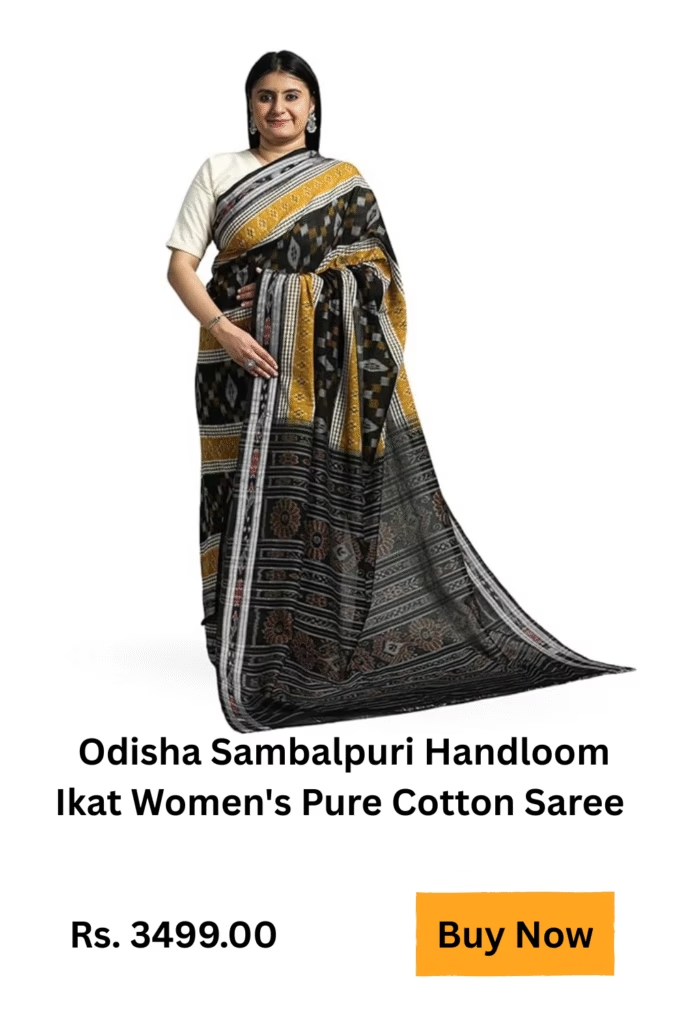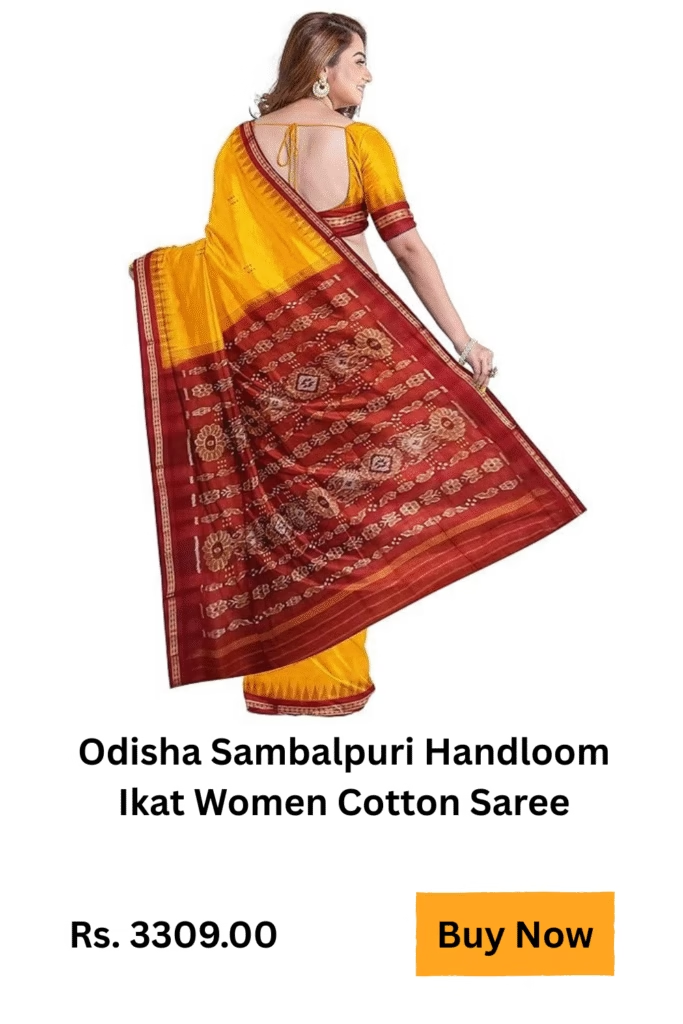Sambalpuri Saree: The Timeless Charm of Odisha’s Handloom Heritage
Introduction

There a truly magic piece to cover yourself in the tradition and that is what exactly Sambalpuri saree provides. Weaved with love in the heart of Odisha these handmade sarees are not just threads, but they represent the stories, heritage, and Indian crafts soul. Another detail about Sambalpuri Sarees that matters whether the beautiful ikat pattern or the bright colors, which are the most prominent is that Sambalpuri Sarees are not just a thing you wear but rather a form of art that you wear and it provides your connection to centuries of history.
Another special thing about the Sambalpuri cotton saree is that it has the comfort that cannot be found anywhere and the everlasting gracefulness. It has light fabric visible structure, breathable, easy to wear, puts it in the perfect category of all-day and special event wear. This style is charmed again by the women of all ages now dressing it up with the current blouses, belts, or the good old fashioned means. The world has become a place where everything is fast, but the Sambalpuri cotton sarees help us realize that beauty comes in slow and meaningful crafts.
The Rich History of Sambalpuri Sarees
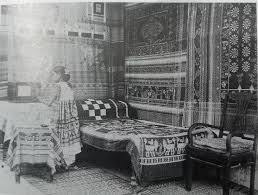
Sambalpuri sarees are more than just elegant drapes—they’re a legacy woven through generations. Originating from western Odisha, these sarees represent the perfect blend of culture, craftsmanship, and creativity. Every Sambalpuri cotton saree carries within it centuries of traditional weaving, known for its bold motifs and distinct ikat dyeing technique.
How It All Began
The Sambalpuri saree tradition dates back to over 1000 years, with roots in the Bargarh, Sambalpur, and Sonepur regions of Odisha.
Weaving communities like the Bhulia weavers, also known as “Meher” weavers, are credited with preserving this rich handloom heritage.
These artisans use a time-intensive process called Bandha (ikat) where threads are tie-dyed before weaving—ensuring the patterns are symmetrical on both sides.
What Makes Sambalpuri Sarees Unique?
Ikat dyeing technique: Unlike printed sarees, the patterns are dyed into the yarns themselves before weaving.
Cultural symbolism: Common motifs include shells, wheels, flowers, animals, and sacred symbols, often inspired by Odisha’s folklore and tribal art.
Natural dyes and handlooms: Most Sambalpuri cotton sarees are still made using traditional looms and eco-friendly dyes.
A Saree That Tells a Story
Wearing a Sambalpuri saree isn’t just about fashion—it’s about embracing a story passed down through skilled hands.
Each piece can take weeks to months to complete, depending on the intricacy of the design.
No two sarees are ever exactly alike, which makes every Sambalpuri cotton saree a unique, handcrafted masterpiece.
Whether you’re a lover of heritage weaves or just beginning your handloom journey, the history behind Sambalpuri sarees makes them a wardrobe treasure worth celebrating.
The best I Found on Amazon
The Unique Weaving Techniques
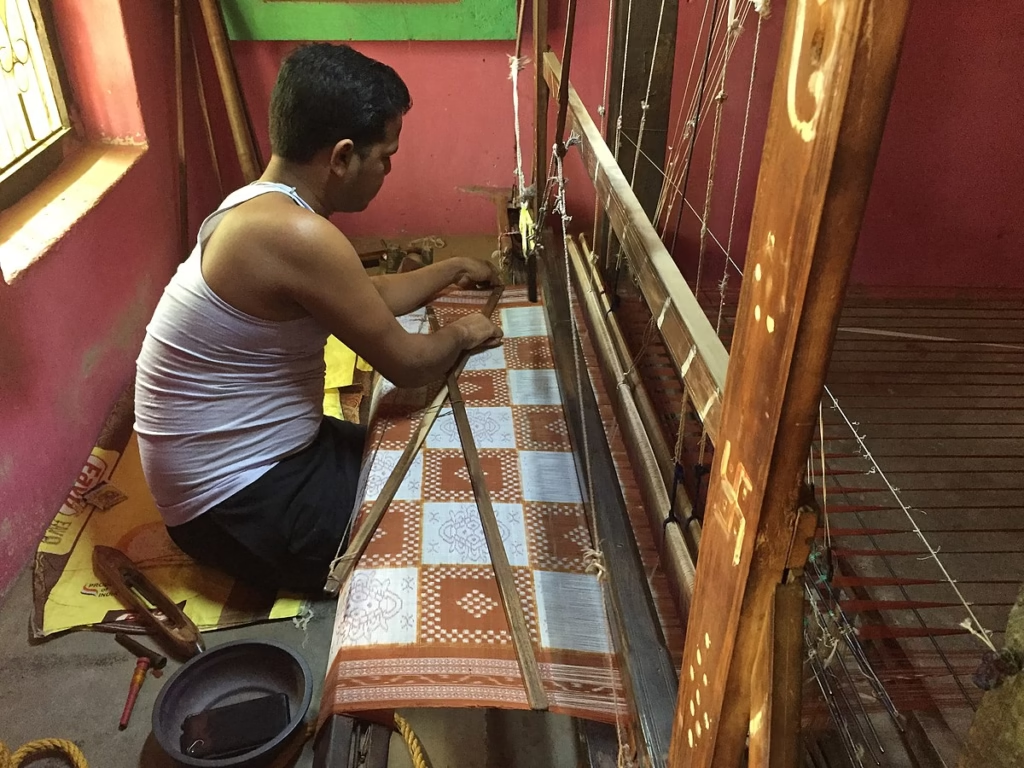
The charm of a Sambalpuri saree lies not just in its vibrant patterns but in the deeply intricate craftsmanship behind every thread. What sets these sarees apart is their Bandha technique—Odisha’s version of the ancient ikat style, which is revered worldwide for its precision and artistry.
The Art of Bandha (Ikat Dyeing)
Pre-woven patterns: In Sambalpuri cotton sarees, the design is dyed into the yarns before they are woven—a technique that requires immense skill and vision.
Resist-dye method: Artisans tightly tie sections of yarn to prevent dye from penetrating, creating patterns through multiple rounds of dyeing.
Double-sided beauty: The final design appears identical on both sides of the fabric, showcasing the weaver’s mastery.
A Slow, Thoughtful Process
Yarn preparation: The process begins by preparing the cotton yarn, soaking, and stretching it on bamboo frames.
Design sketching: Artisans often draw intricate motifs on graph paper to plan exact placements on the saree.
Hand-dyeing: Using natural or azo-free dyes, yarns are carefully dyed, often in stages to achieve multiple colors.
Weaving on pit looms: After drying, the yarns are set up on hand-operated looms—often taking weeks or even months for one saree.
Why It Matters
No shortcuts: Machine-made copies can’t replicate the precision and soul of authentic Sambalpuri weaving.
Cultural preservation: Each technique passed down by generations keeps Odisha’s weaving culture alive.
Sustainable fashion: Made with minimal environmental impact, these sarees are a conscious choice for eco-loving fashionistas.
Wearing a Sambalpuri cotton saree means wearing a piece of heritage—lovingly crafted with patience, tradition, and unmatched artistry. It’s not just a saree; it’s a symbol of time, culture, and dedication woven into fabric.
Distinctive Design Elements
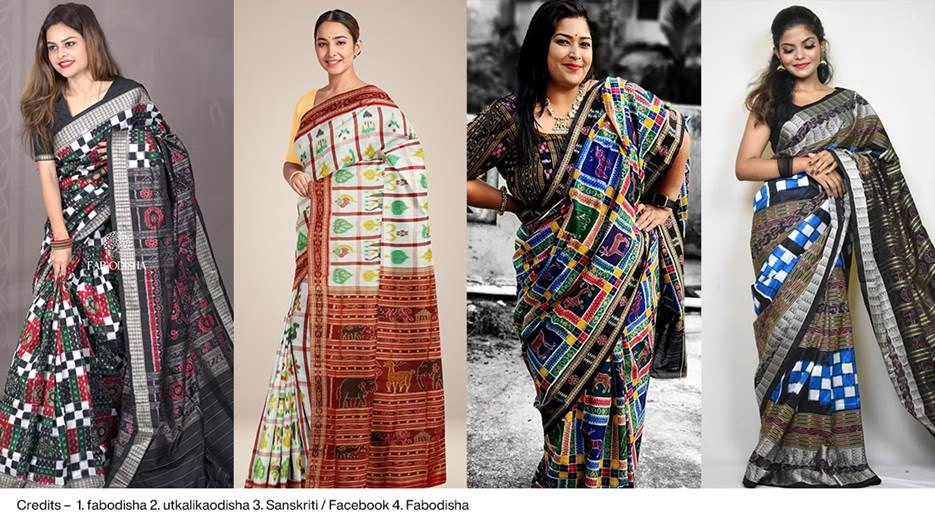
One glance at a Sambalpuri saree, and you know it’s something special. What makes it stand out isn’t just the handloom—it’s the storytelling in every motif, the cultural symbols in every thread, and the earthy charm that connects it all.
Traditional Motifs with Meaning
Each Sambalpuri cotton saree is more than fabric—it’s a wearable canvas of Odisha’s cultural soul. The motifs aren’t randomly placed; they carry meaning, tradition, and heritage.
Shankha (Conch Shell): Symbol of purity and devotion, often seen in temple rituals.
Chakra (Wheel): Inspired by the wheel of Lord Jagannath’s chariot—reflecting eternity and motion.
Phula (Flowers): A tribute to nature and womanhood, adding softness to the strong weave.
Animal & bird motifs: Parrots, elephants, and peacocks bring stories of rural life to life.
Color Palettes That Pop
Vibrant yet rooted: Sambalpuri sarees come in bold reds, indigos, deep blacks, and rich greens—each telling a different mood or occasion.
Natural dyes: Traditional sarees often use natural or azo-free dyes, giving the fabric a rich, organic finish.
Borders & Pallu Detailing
The signature of a Sambalpuri saree often lies in its borders and pallu (the loose end of the saree), where the weaver’s creativity truly shines.
Geometric precision: From chevrons to temple borders, the edges are meticulously symmetrical.
Heavy pallus: Richly decorated pallus feature extended motifs, storytelling patterns, or bold contrast weaves.
A Harmony of Form and Function
Lightweight yet structured: Ideal for both everyday comfort and festive grace.
Symmetry and balance: Each design is crafted to maintain visual harmony when draped.
Wearing a Sambalpuri cotton saree isn’t just about style—it’s about embracing a rich cultural identity. The designs reflect who we are, where we come from, and the artistry that shapes our heritage.
The Artisans Behind the Legacy

Behind every stunning Sambalpuri saree lies a community of incredibly skilled artisans—men and women who have preserved this timeless tradition for generations. Their hands don’t just weave fabric—they weave stories, culture, and pride.
Weaving Is More Than a Skill—It’s a Way of Life
For the artisans of Western Odisha, weaving a Sambalpuri saree isn’t just a job. It’s a family tradition passed down through decades, often beginning from a young age.
Generational knowledge: Many weavers start learning from their parents or grandparents, blending heritage with modern touches.
Home-based looms: Most artisans work from small handlooms set up in their homes, especially in villages like Bargarh, Sonepur, and Sambalpur.
Role of women: Women play a vital part in the spinning, dyeing, and intricate detailing—often balancing both home and craft.
The Challenges They Face
Despite their incredible talent, Sambalpuri weavers often struggle with limited exposure and fair pay.
Market access: Many artisans don’t get direct access to customers, relying on middlemen or limited outlets.
Time-intensive craft: It can take up to 7–15 days to weave a single Sambalpuri saree, depending on the design’s complexity.
Financial pressure: Inconsistent orders and lack of funding make it hard for many to sustain the craft full-time.
Honouring Their Work
Buying a Sambalpuri saree means more than owning a beautiful handloom piece—it means supporting the very people who keep this cultural treasure alive.
Support through government cooperatives: Initiatives like Sambalpuri Bastralaya aim to ensure fair wages and exposure for weavers.
Online platforms: More artisans are now connecting with global buyers through digital marketplaces and handloom fairs.
Awareness through fashion: As more designers and influencers highlight Sambalpuri sarees, demand is slowly helping revive traditional looms.
Every thread you wear tells their story. Choosing a Sambalpuri saree is a quiet yet powerful way to honor the artisans and ensure their legacy lives on for generations to come.
Global Recognition and Modern Appeal
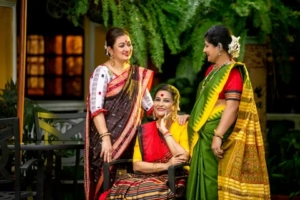
The charm of Indian handlooms is no longer confined to local markets. What was once a regional craft has now gracefully stepped into global wardrobes. This growing recognition isn’t just about fashion—it’s a celebration of culture, identity, and sustainable artistry.
From Local Looms to International Runways
Designers, fashion lovers, and handloom advocates across the world are embracing traditional weaves like never before. The distinct patterns, rich colors, and eco-friendly appeal make handwoven pieces stand out globally.
Showcased at global fashion weeks: Ethnic textiles are now featured on international platforms and fashion runways.
Celebrity endorsements: Bollywood and international celebrities have been spotted in traditional Indian weaves, increasing their global appeal.
Fusion styling: Sarees are now being paired with belts, jackets, crop tops, and sneakers—blending heritage with trend.
Why Modern Fashion Loves Traditional Weaves
Today’s consumers are becoming more mindful about what they wear. Traditional weaves not only look timeless but also align with sustainable and slow fashion principles.
Eco-friendly: Handloom production uses less energy and resources.
One-of-a-kind: Each piece is handmade, making it unique—no mass production.
Versatile fashion: Perfect for both traditional functions and contemporary styling.
A Timeless Piece in Today’s Wardrobe
Wearing a Sambalpuri saree today is about more than culture—it’s about storytelling, sustainability, and style. Whether you’re styling it for a wedding, brunch, or global event, it effortlessly bridges the gap between tradition and modernity.
Buying and Caring for Your Sambalpuri Saree
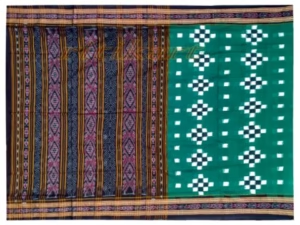
Investing in a handwoven masterpiece is not just a fashion choice—it’s an appreciation of art, heritage, and slow fashion. But knowing where to shop and how to care for it makes all the difference in preserving its beauty for years to come.
Where to Buy Authentic Pieces
With the rising popularity of handloom, many lookalikes are floating in the market. It’s important to choose sellers who support real artisans and provide genuine products.
Government emporiums: State-run stores and exhibitions are great for finding certified handlooms.
Reputed handloom brands: Look for brands that mention the weaver’s name, origin, and provide handloom certification.
Local fairs and haats: Visiting regional fairs gives you a chance to buy directly from the artisans.
Online platforms: Many e-commerce sites now offer a curated handloom section—just check for seller credibility and reviews.
Care Tips to Keep It Beautiful
A Sambalpuri saree is woven with love and deserves the same care in return. With a few mindful practices, your saree can retain its elegance for generations.
First wash: Always dry clean the first time to lock in the natural dyes.
Hand wash with mild detergents: Use cold water and avoid harsh chemicals.
Dry in shade: Direct sunlight can fade the rich colors, so dry it inside out under a shade.
Iron carefully: Use a low-heat setting and preferably iron it while it’s slightly damp.
Store properly: Wrap it in a muslin cloth and keep it in a cool, dry place to avoid discoloration and moisture damage.
A Piece to Cherish
Treat your saree not just as clothing, but as an heirloom. With proper care, it won’t just stay stunning—it’ll tell your story to the next generation too.
Conclusion
Sambalpuri sarees are not only beautiful drapes, but also they are an alive part of the art and culture of Odisha. The skill is of the artisans who have perfected the art of weaving within the generations and and a story per motif lies deep in the tradition. The bright the color, elaborate ikat designs, or just the comfort of sambalpuri cotton saree, these weaves are a sibling match to celebrate heritage and the daily wear.
Well, when making the journey into the world of handlooms, having a Sambalpuri saree is not a fad to be in fashion, but a conscious decision to wear a sustainable design, to embrace Indian crafts and wear something really classic. Therefore, when next you are completing your ethnic collection, allow a small part of the weaving heritage of Odisha to be in your collection- both in your hearts as well as in your wardrobe.
FAQs
What makes Sambalpuri saree different from other handloom sarees?
Sambalpuri sarees stand out for their unique ikat dyeing technique, where the threads are tie-dyed before weaving. This results in stunning, intricate patterns that are visible on both sides of the fabric. Unlike printed designs, the motifs are woven directly into the fabric, making each saree a true work of art.
Is Sambalpuri cotton saree suitable for everyday wear?
Absolutely! Sambalpuri cotton sarees are known for their soft, breathable fabric, making them ideal for everyday use, especially in hot and humid climates. They’re lightweight, comfortable, and still carry a rich traditional appeal—perfect for work, casual outings, or even small functions.
How do I take care of my Sambalpuri saree to make it last longer?
To preserve the colors and fabric quality, it’s best to hand wash your Sambalpuri saree separately in cold water for the first few washes. Avoid using strong detergents or bleach. Dry it in shade and always iron on low heat. With gentle care, these sarees can last for years without losing their charm.
Where can I buy authentic Sambalpuri sarees online?
You can find genuine Sambalpuri sarees on trusted handloom websites, government emporiums, or verified sellers from Odisha. Always look for product descriptions that mention “handwoven” or “ikat” and check for reviews or authenticity tags. Supporting artisan-run platforms helps ensure you’re buying original handloom pieces.


